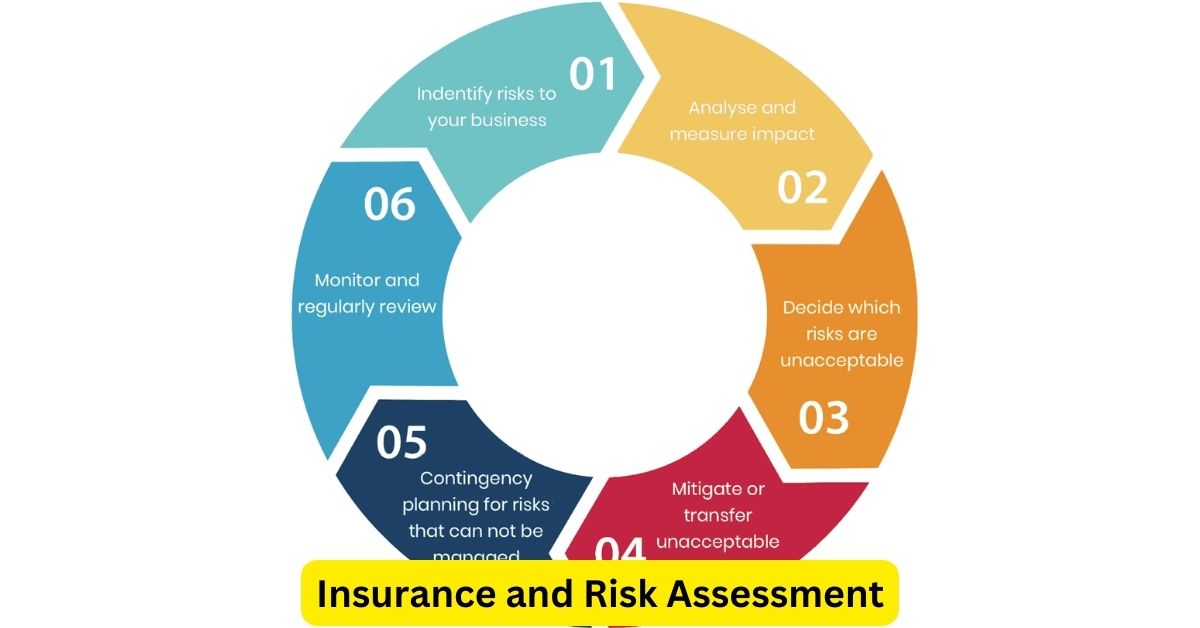In today’s unpredictable world, managing risks is a crucial aspect of running a successful business. Insurance and risk assessment are fundamental components of a robust risk management strategy, offering protection against potential financial losses and ensuring the stability and sustainability of your enterprise. By understanding how insurance and risk assessment work together, businesses can safeguard their assets, employees, and reputation effectively.
The Role of Risk Assessment
Risk assessment is the process of identifying, analyzing, and evaluating potential risks that could negatively impact a business. It involves a systematic approach to understanding what could go wrong, the likelihood of such events occurring, and the potential consequences. A thorough risk assessment allows businesses to make informed decisions about the types of insurance coverage they need and how to prioritize risk management efforts.
Here are some key steps involved in conducting a risk assessment:
- Identify Potential Risks: Start by identifying all possible risks related to your business operations. These can include physical risks like fire or theft, financial risks such as market fluctuations, operational risks like equipment failure, and strategic risks including competition and regulatory changes.
- Analyze Risks: Once potential risks are identified, analyze the likelihood and impact of each risk. Consider both quantitative and qualitative factors, such as financial losses, reputational damage, and operational disruptions.
- Evaluate and Prioritize Risks: Determine which risks pose the most significant threat to your business and prioritize them based on their potential impact and likelihood. This evaluation helps in allocating resources effectively to manage and mitigate the most critical risks.
- Implement Risk Mitigation Strategies: Develop strategies to minimize the impact of identified risks. This may involve implementing safety measures, training employees, diversifying revenue streams, or transferring risks through insurance.
The Importance of Insurance in Risk Management
Insurance plays a vital role in risk management by providing financial protection against unforeseen events. It acts as a safety net, allowing businesses to recover from losses without significant financial strain. Here’s how insurance supports risk management:
- Transfer of Risk: Insurance allows businesses to transfer the financial burden of certain risks to an insurance provider. By paying regular premiums, companies can protect themselves against substantial financial losses resulting from accidents, lawsuits, natural disasters, and more.
- Financial Stability: With adequate insurance coverage, businesses can maintain financial stability even in the face of unexpected events. Insurance payouts can cover costs related to property damage, legal liabilities, employee injuries, and business interruptions, ensuring continued operations.
- Legal Compliance: Certain types of insurance, such as workers’ compensation and liability insurance, are legally required for businesses in many jurisdictions. Having the right coverage ensures compliance with legal requirements and avoids potential penalties.
- Enhanced Credibility: Having comprehensive insurance coverage enhances a business’s credibility and reputation. Clients, partners, and investors are more likely to trust a company that demonstrates a proactive approach to risk management.
Aligning Insurance with Risk Assessment
To maximize the benefits of insurance, businesses must align their insurance coverage with their risk assessment findings. Here are some tips to achieve this alignment:
- Review and Update Coverage: Regularly review your insurance policies to ensure they reflect your current risk profile and business needs. As your business evolves, new risks may emerge, requiring adjustments to your coverage.
- Consult with Experts: Work with insurance brokers or risk management consultants to identify gaps in coverage and explore specialized insurance options tailored to your industry and operations.
- Integrate Risk Management Practices: Combine insurance with other risk management practices, such as implementing safety protocols, employee training, and contingency planning, to create a comprehensive risk management strategy.
Conclusion
Insurance and risk assessment are integral to effective business protection. By identifying potential risks and securing appropriate insurance coverage, businesses can mitigate the impact of unforeseen events and safeguard their financial well-being. A strategic approach to risk management not only protects assets but also fosters growth and resilience in a competitive market. Prioritizing insurance and risk assessment is essential for businesses seeking to thrive in an ever-changing landscape.

